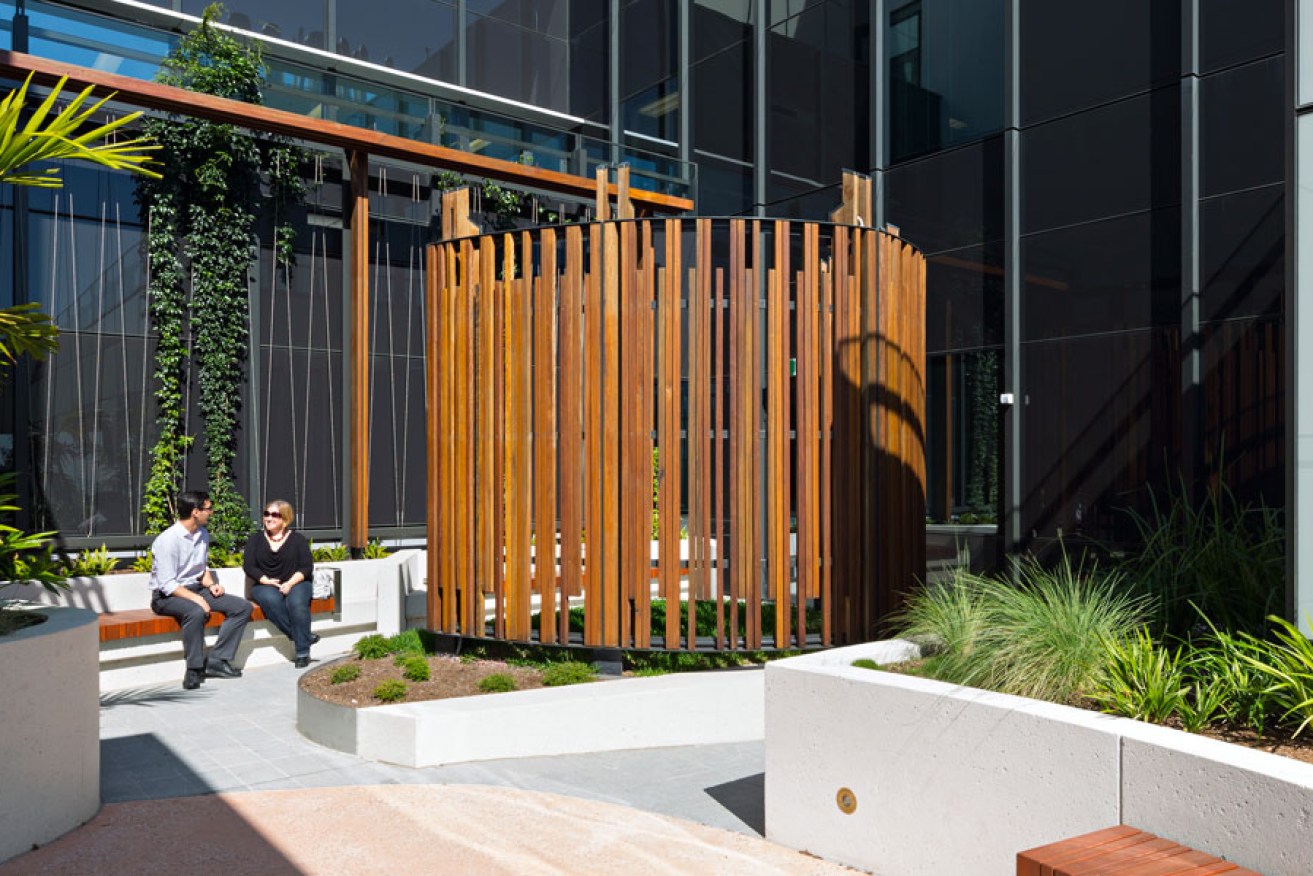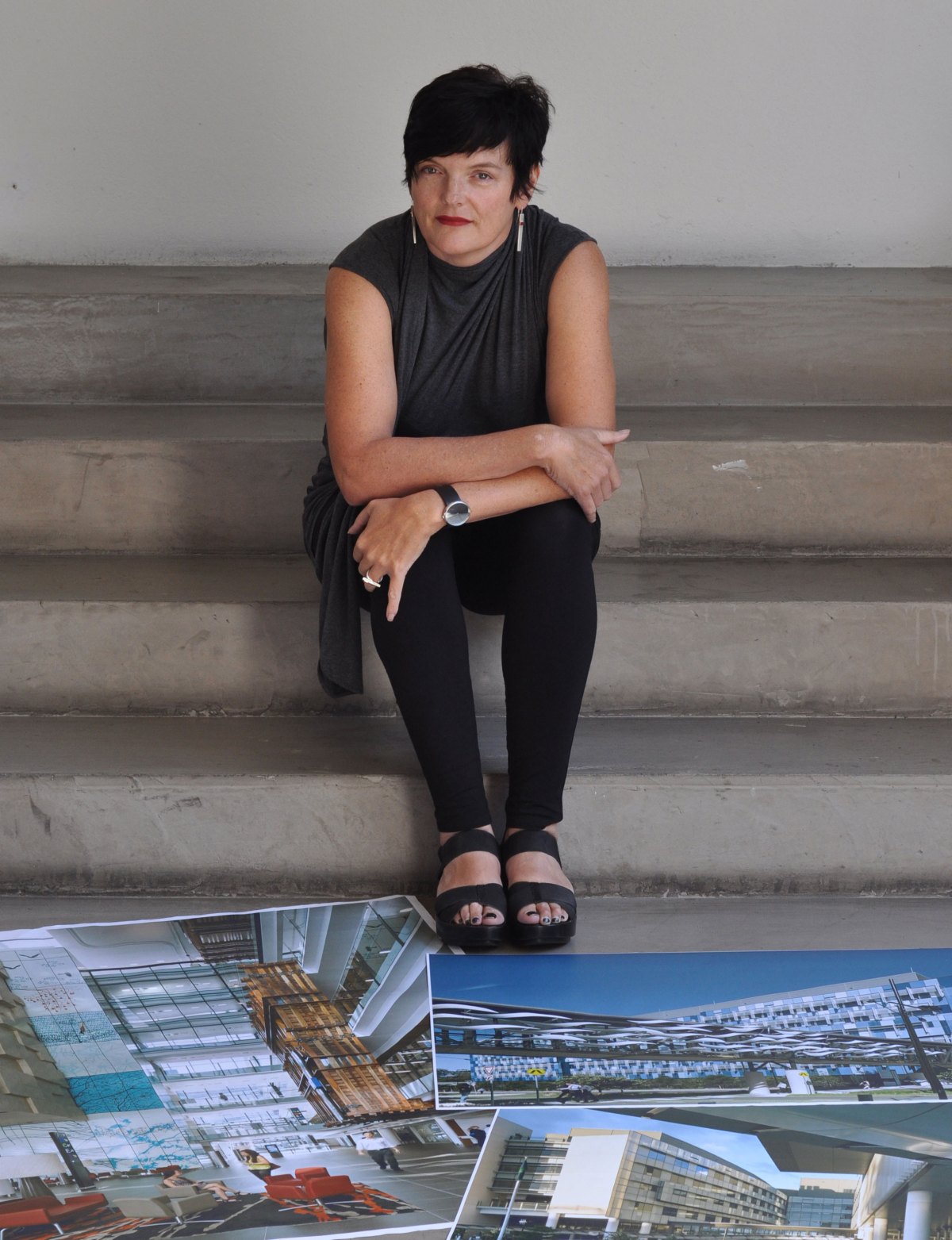Designing a healthier hospital

A courtyard at the Gold Coast University Hospital, designed by HASSELL, Silver Thomas Hanley and PDT. Photo: Christopher Frederick Jones
I always wanted to be a nurse when I “grew up” and by the time I was 22 years of age, I found myself working in a busy intensive-care unit in a metropolitan hospital where the fragilities of life were played out in the grimmest of environments.
The efficiency and ingenuity of the human body never failed to fascinate me. This and my interest in people and their stories is what attracted me to nursing. Working as a nurse in intensive-care and burns units meant that every day was spent dealing with life-threatening events, and either turning them into a success story of recovery and health or dealing with difficult decisions and conversations with family members.
Confronting, yes – but for a young adult, also life-changing. The resilience of staff in these clinical environments is not to be taken for granted.
I found myself seeking respite through creative pursuits totally disassociated from my daily vocation. After a decade in nursing, I realised that while I loved the medical world, I needed to break away from the strict protocols and strains of the hospital environment.
I enrolled in architecture while continuing to nurse part-time. It was during this process that I realised how my observations about light, space, patterns of movement and communication could have real significance in my burgeoning new career.
I came to realise how the congested space, artificial light, and continual background noise of clinical environments did not always assist in the delivery of care or support staff. The lack of natural light, constant air-conditioning and stark outdoor areas did not promote respite from the physically and mentally challenging environment.
The insights drawn from my experiences as a nurse have been invaluable to me as an architect, now specialising in healthcare design. Not only has it allowed me to speak knowledgeably with user groups about their needs and workplace challenges, but to reinterpret these into design solutions, and to discern other requirements which staff might not otherwise be able to enunciate – the small, simple design changes that can have profound effects on their working day.
At a time when health budgets are tightening, good design can prove cost-effective. Not only does it ensure efficient layout and workflows, but it also provides improved working environments, reducing staff turnover and sickness, and incorporates evidence-based design elements that can assist patient recovery – all of which benefit a health facility’s bottom line.
There are a number of key considerations that dictate my approach to a well-designed clinical environment:
- Providing links with the outdoors, either through a balcony, courtyard or sometimes just a window that lets the breeze hit your face.
- Creating an efficient work environment which reduces walking distances and promotes communication with colleagues and patients.
- Ensuring logical workflows that reduce the risk of medical error.
- Designing an environment that minimises the spread of hospital-acquired infection.
- Creating a restful environment for patients and for staff on breaks.
- Delivering a facility with an intuitive way of finding clues.
- Delivering a durable, value-for-money, design solution.
However, design alone cannot meet these objectives without sound endorsement and ownership by the teams who will ultimately work in these facilities.
Sometimes it is a challenge to convince a health client to look beyond the clinical practicalities and understand that apparently “nice to have” features, such as an outdoor balcony where staff and patients can take a break from the stressful hospital environment, are actually quite important.
The importance of including access to natural environments in hospitals and workplace settings is now well documented.
For staff, exposure to sunlight helps reinstate circadian rhythms which often become disturbed through shift work. Bright daylight has been shown to enhance mood, improve mental health and increase alertness, while a lack of fresh air and natural light can decrease concentration and performance.
It matters for patients, too. A 2005 study found post-operative elective surgery patients placed on the bright side of a hospital unit (where they were exposed to 46 per cent more sunlight on average than patients on the dim side of the ward) experienced less perceived stress and marginally less pain. The patients exposed to greater natural light took 22% less analgesic medication per hour, resulting in a 21% reduction in pain medication costs.
It is not a case of just adding more windows and courtyards to encourage more light. Even these “simple” elements must be carefully considered in terms of placement, shading and materials, to ensure they not only enhance patient and staff comfort but also offer cost-effective, durable and safe outcomes.
Good design can send powerful messages to staff and patients about the standard of care that will be provided by the facility.
Good design and functionality go hand in hand. Clinical efficiencies, married with external access and views, add to the amenity of each department, which in turn provides more enjoyable staff working conditions and shorter patient stays. This is ultimately the aim of good health design, and a common goal we can all embrace.
Megan Reading is a principal at international design firm HASSELL, which specialises in health facilities and hospitals. She led the interior design of the new Gold Coast University Hospital.





